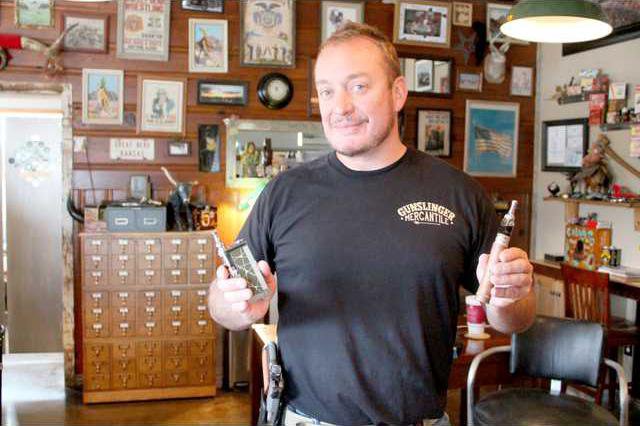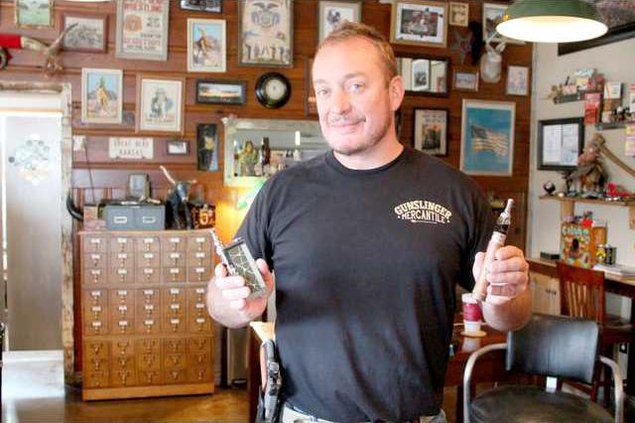Attitudes towards smoking changing: A look at the numbers
• A 2014 Alcohol, Tobacco and Other Drugs survey indicated efforts to reduce smoking among Barton County teens is working.
• While the average age of initiation continues to hover in the 13-year-old range, the percentage of young people who have used cigarettes or smokeless tobacco has gone down, both in lifetime prevalence and past 30-day usage.
• In 2010, 15.1 percent of young people surveyed said they had tried smokeless tobacco, and 23.8 percent had tried cigarettes. In 2014, that number dropped to 11.96 percent for smokeless, and 18.57 for cigarettes.
• Similarly, in 2010, only 7.6 percent of those surveyed used smokeless tobacco and 12.1 percent had used cigarettes in the past 30 days. In 2014, those numbers also dropped to 5.62 percent for smokeless and 5.3 percent for cigarettes.
• Fewer young people feel smoking makes them look cool than ever before, and fewer have a favorable attitude toward it’s use.
• In 2010, 2.1 percent felt smoking would improve their cool quotient, while in 2014, less than 1 percent did. And in 2010, 13. 8 percent felt use was okay, while in 2014, that dropped to 3.98 percent.
• Young people also perceive it is a little more difficult to access tobacco than in past years.
• In 2010, 25.3 percent thought it would be easy to get tobacco. In 2014, only 22.47 percent did.
Statistics, courtesy of the Barton County Health Department
Kansas is falling short when it comes to passing policies to prevent and reduce suffering and death from cancer, according to a new report by the American Cancer Society Cancer Action Network. Of 12 measured areas, Kansas measured up to only two benchmarks, having a smoke-free law and having effective pain policy.
But Kansas isn’t alone. The report, “How Do You Measure up?: A progress report on state legislative activity to reduce cancer incidence and mortality,” finds 40 other states that are in the red, hitting four or fewer benchmarks. Ten states fall in the yellow category, meeting five to nine areas, and only one was in the green in 10 or more areas measured.
“State legislators have the opportunity to pass laws and policies that have been proven to help people fight cancer by emphasizing prevention, making affordable, quality healthcare accessible, curbing tobacco use and prioritizing quality of life for patients and their families,” said Reagan Cussimanio, Kansas government relations director for ACS CAN.
Higher taxes on cigarettes
Five of the twelve benchmarks address tobacco use. The advocacy group will be supporting a bill in the upcoming state legislative session to increase taxes on cigarettes by $1.50 and increasing taxes on other tobacco products to create parity with the cigarette tax. By doing so, they hope to prevent children from starting to use tobacco and help adults quit. Currently, Kansas charges 79 cents per pack, ranking it 36 among 50 states and Washington D.C. Raising the tax to $2.29 per pack would make it 12 in the nation.
Vaping vs. smoking
Some adults may decide to try a new trend called “vaping” in response to an increase like that. “Vaping is a lot less expensive than smoking cigarettes,” said Matthew Miller, proprietor of Great Bend’s Gunslinger Mercantile. He made the switch from cigarettes to vaping about two months ago. “I feel better than I have in years.”
“Vape,” also called “juice,” is a mixture of propylene glycol or vegetable glycerine, flavoring ( any variety of fruit, candy, chocolate, coffee, mint, the list goes on), and nicotine. Users load it into a battery powered atomizer, where it is released into the mouth and throat like a cigarette, without the carcinogens of the traditional cigarette. Start kits start at around $50, with more sophisticated atomizers running into the $100 to $200 range, plus there is the cost of the rechargeable battery and replacement coils and tanks. This upfront cost is a barrier to younger smokers. But after the initial investment, the vape ingredients can be purchased by adults for around $10 a bottle.
“For a person who smokes a pack a day, this can bring a $180 a month habit down to $40,” Miller said. And best of all, no excise tax. At least not for now.
Nicotine concerns
Vaping isn’t without risks, either. Nicotine overdosing can be a problem, and the industry is largely self-regulated rather than government regulated, so users need to be cautious about what companies they purchase their supplies from.
“Because it is flavored, people need to be sure not to leave it out where young children can get it, because if they were to ingest a large quantity, it could be very dangerous,” Miller said. While it isn’t a carcinogen, nicotine is a mild central nervous system stimulant and a stronger cardiovascular system stimulant. It constricts blood vessels, increasing the blood pressure and stimulating the heart, and raises the blood fat levels, according to QuitSmokingSupport.com.
Currently, the Food and Drug Administration does not regulate e-cigarettes or vaping, but it has submitted a proposal to Congress to extend their authority to cover these and other nicotine delivery products. A handful of states, too, are considering ways to tax vaping. It remains to be seen if encouraging smokers to engage in a less damaging way of managing their addiction wins out over other arguments in favor of tax, including discouraging children, who are attracted to flavors, from starting.
According to ACS CAN, some of the benefits Kansas could realize from increasing the cigarette tax would be an anticipated 20 percent reduction in youth smoking, preventing 26,000 children from ever starting to smoke, generating an estimated $87.5 million in revenue for the state, and savings to the state’s Medicaid program of more than $3 million over a five-year period.
Stop teen tanning
Cussimanio also hopes ACS CAN can convince Kansas legislators in 2015 to pass a law which would prohibit children and teenabers under the age of 18 from accessing tanning beds. To date, nine states have already passed comprehensive laws which restrict minors; use of tanning devices and many other states are considering similar legislation, she said.
Most skin cancers are preventable, but diagnoses and deaths continue to increase, despite widespread education efforts about sun safety. It is the fourth most common form of cancer for individuals aged 15 to 29. Young people under the age of 18 are particularly at risk for the damages associated with ultraviolet radiation and exposure, since their skin is not fully developed and their skin cells are dividing and changing more rapidly than those of adults.
“For the first time, the U.S. Surgeon General is calling for national action. He is calling on all of us to reinvigorate the fight against skin cancer,” she said.
Cussimanio estimates there will be more than 780 new cases of melanoma diagnosed in Kansas in the coming year, and of those, 100 are likely to die. Nationwide, the Surgeon General said nearly 5 million people are treated for all types of skin cancer, she said.
Other areas where policies need to be tweaked are breast and cervical cancer early detection programs, physical education time requirements, increased access to Medicaid, and access to palliative care. View the complete report for details on Kansas’s rankings at www.acscan.org.





